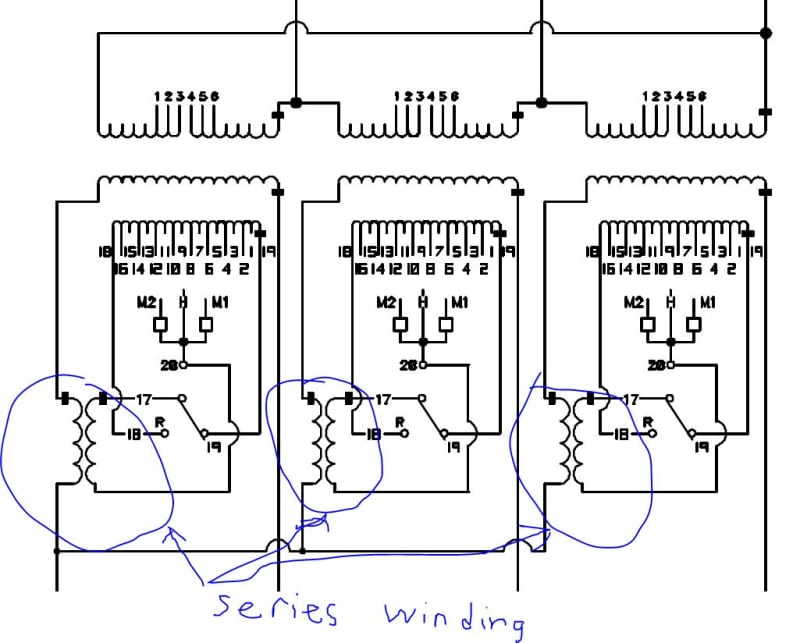kartracer087
Electrical
- Apr 18, 2020
- 72
Hi,
I have a question regarding ANSI style load tap changers applied on the low voltage winding (26.4kV) windings for distribution transformers. I have seen series type LTC's applied to these units where the winding is split into a main winding and a tap winding. Typically ANSI spec tap changers are +/- 10% in 0.625% steps. Now let's say you have a transformer delta primary grounded wye secondary 138kV - 26.4Y/15.52kV. Figuring roughly 80 turns in secondary, 15.52kV rated, if your regulating winding is to get 0.625% how is this possible? 1 turn added or subtracted is 1/80 or 1.25%. And adding turns to the secondary winding to get close to .625% per turn added or removed is not a solution because that would increase the overall transformer impedance far too much. So how can you get the smaller steps in voltage when the LTC is directly on the LV? Does the reactor used in the load tap changers play a part in the reduction in volts per turn?
I have a question regarding ANSI style load tap changers applied on the low voltage winding (26.4kV) windings for distribution transformers. I have seen series type LTC's applied to these units where the winding is split into a main winding and a tap winding. Typically ANSI spec tap changers are +/- 10% in 0.625% steps. Now let's say you have a transformer delta primary grounded wye secondary 138kV - 26.4Y/15.52kV. Figuring roughly 80 turns in secondary, 15.52kV rated, if your regulating winding is to get 0.625% how is this possible? 1 turn added or subtracted is 1/80 or 1.25%. And adding turns to the secondary winding to get close to .625% per turn added or removed is not a solution because that would increase the overall transformer impedance far too much. So how can you get the smaller steps in voltage when the LTC is directly on the LV? Does the reactor used in the load tap changers play a part in the reduction in volts per turn?

